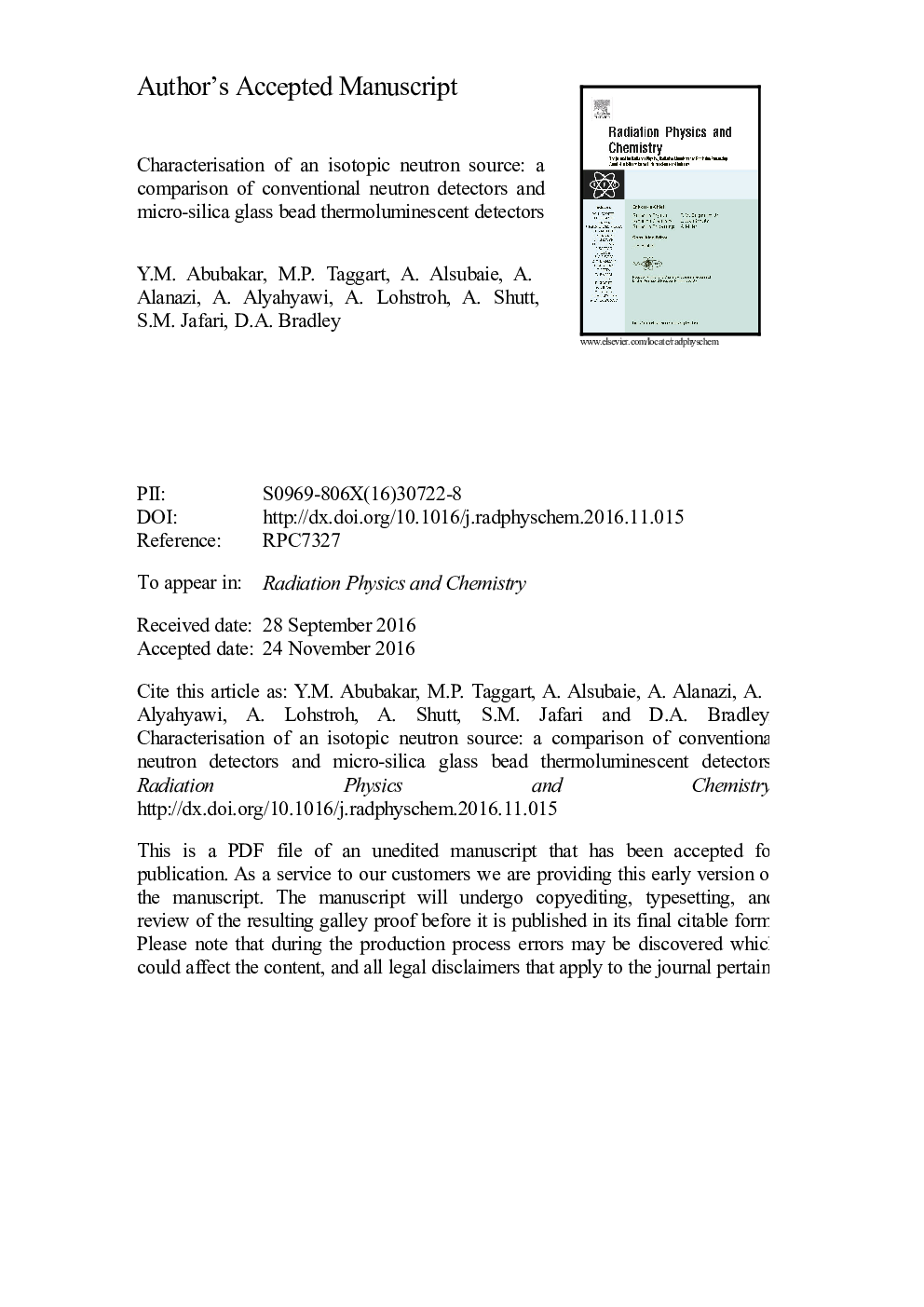| Article ID | Journal | Published Year | Pages | File Type |
|---|---|---|---|---|
| 5499136 | Radiation Physics and Chemistry | 2017 | 6 Pages |
Abstract
As a result of their thermoluminescent response, low cost commercial glass beads have been demonstrated to offer potential use as radiation dosimeters, providing capability in sensing different types of ionising radiation. With a linear response over a large range of dose and spatial resolution that allows measurements down to the order of 1Â mm, their performance renders them of interest in situations in which sensitivity, dynamic range, and fine spatial resolution are called for. In the present work, the suitability of glass beads for characterisation of an Americium-Beryllium (241AmBe) neutron source has been assessed. Direct comparison has been made using conventional 3He and boron tri-fluoride neutron detectors as well as Monte Carlo simulation. Good agreement is obtained between the glass beads and gas detectors in terms of general reduction of count rate with distance. Furthermore, the glass beads demonstrate exceptional spatial resolution, leading to the observation of fine detail in the plot of dose versus distance from source. Fine resolution peaks arising in the measured plots, also present in simulations, are interesting features which based on our best knowledge have previously not been reported. The features are reproduced in both experiment and simulation but we do not have a firm reason for their origin. Of greater clarity is that the glass beads have considerable potential for use in high spatial resolution neutron field characterisation, subject to the availability of a suitable automated TLD reader.
Related Topics
Physical Sciences and Engineering
Physics and Astronomy
Radiation
Authors
Y.M. Abubakar, M.P. Taggart, A. Alsubaie, A. Alanazi, A. Alyahyawi, A. Lohstroh, A. Shutt, S.M. Jafari, D.A. Bradley,
